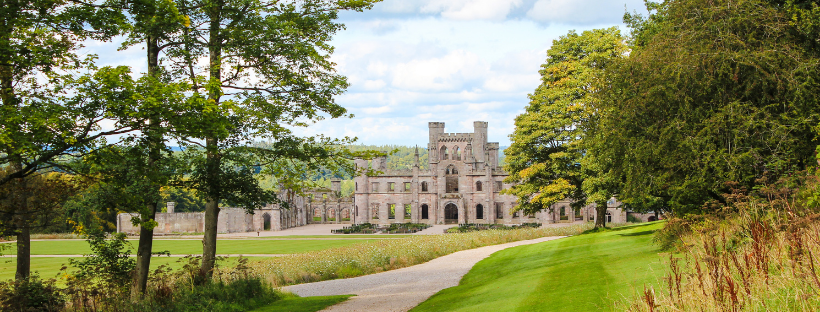Red squirrels thrive in Lowther’s woods

The Lowther Estate is in the North East Lake District, in Cumbria – the heart of a stronghold for red squirrels – something that is very important to both the estate and landscape.
The estate aims to work with nature through the in-house farm and commercial forestry. Lowther’s red squirrels are an important part of the estate’s aims. As a family-owned estate that has practiced forestry for many centuries there is a relationship between the woodlands and the density of squirrels they are able to support.

The woodlands range from newly planted broadleaf, ancient Continuous Cover Forestry (CCF) and more commercial soft wood planting. Red squirrels are present and thriving, alongside the trees. Forestry at Lowther is for nature and commercial values, so it is important this relationship is harmonious. Unlike the non-native grey squirrels, our reds are not detrimental to the trees.
The red squirrels on the estate are an aid to CCF, in their efforts of creating food caches that may promote natural regeneration of trees such as oak, hazel and pine nuts.
Forestry at Lowther
There are 1,700 hectares of woodland with a stable red squirrel population. Operating a system of CCF on the estate allows natural regeneration of the woodland. As a result of this there are trees ranging in ages from 6-month saplings to 50 + years old.
This may not be possible or as successful if the squirrels were the non-native grey. For this system to work young trees must be allowed to grow and not bark stripped. Even with the high density of red squirrels on and around the estate this has not been an issue.
Red squirrels should be promoted alongside forestry. Careful planning of forestry practices can promote red squirrel habitats to allow their populations to expand. For example, timing clear felling or thinning of woodlands to take place after red squirrels have reared their young can allow the population to move territories.
Protecting red squirrels
It has not always been smooth sailing, but this is a natural relationship between the environment and sustainable forestry management. To maintain the relationship with red squirrels and forestry, grey squirrels are prevented from invading the area. This allows Lowther’s forestry and native red squirrel population to thrive alongside each other.
Jerry Moss is the red squirrel ranger for Center Parcs at Whinfell Forest and has been helping promote red squirrels for 18 years on the estate and surrounding areas. Penrith Red Squirrel Group (PRSG) also help monitor the reds for disease and population in the local area.
Jerry and PRSG help manage grey squirrels on the Lowther Estate and the surrounding area as well – controlling the potential risk of disease outbreaks and population expansion of the greys. This relationship allows a better understanding of where red squirrels can be found and monitor their population around the estate in differing woodlands.

Plans for the future
The estate is always looking to the future and trying to develop the best possible plans to achieve a range of objectives. Planning for a biodiverse environment that supports a diverse array of wildlife, including the red squirrel. In the past humans have reduced red squirrel habitats so their range is reduced and fragmented.
We need more trees planted in the environment to expand and connect crucial habitats for red squirrels. Planting can link isolated populations of red squirrels through woodland corridors that allow transfer of genetics and habitat expansion. Without this red squirrel numbers will not increase.





